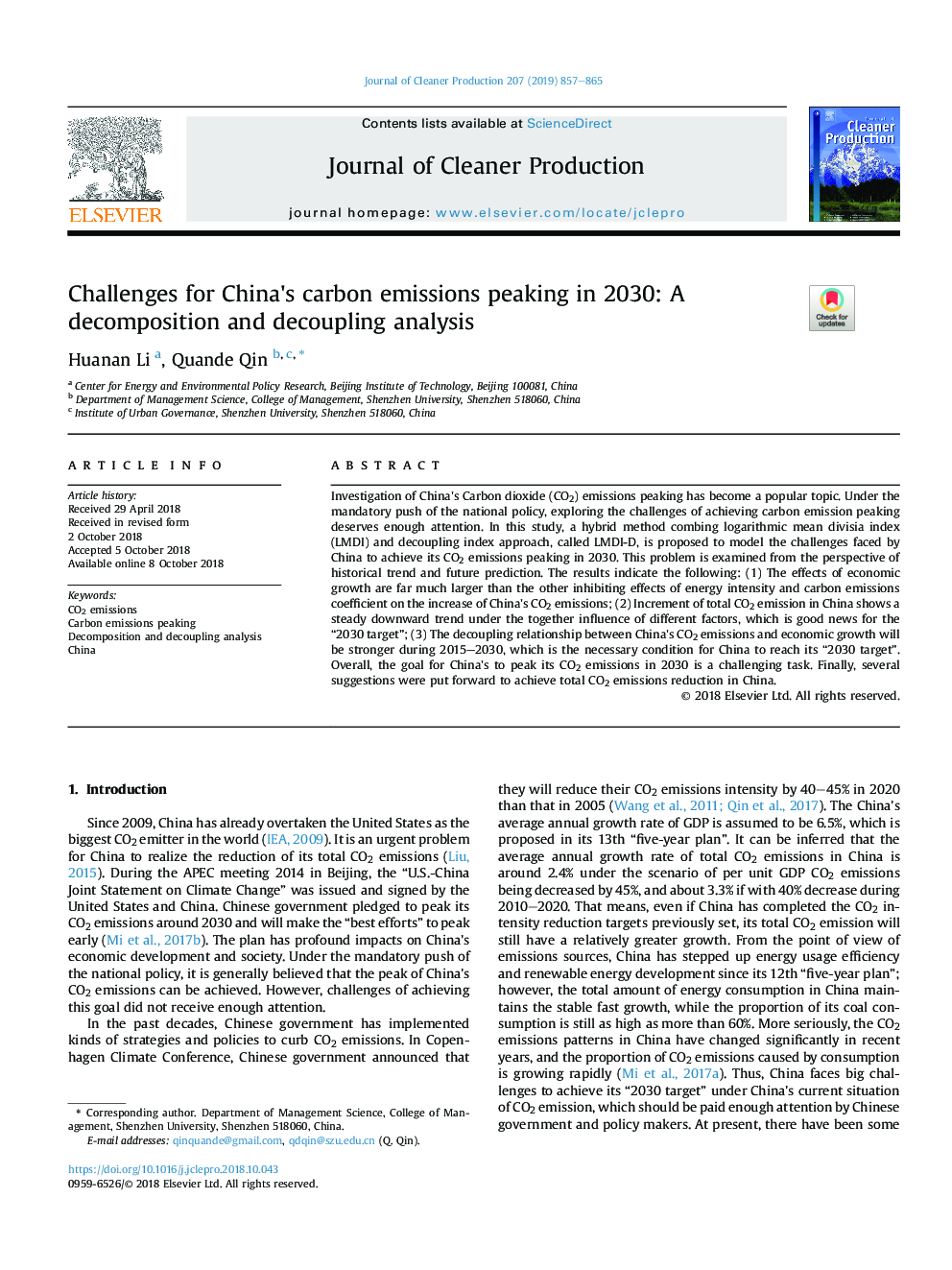| Article ID | Journal | Published Year | Pages | File Type |
|---|---|---|---|---|
| 11262901 | Journal of Cleaner Production | 2019 | 9 Pages |
Abstract
Investigation of China's Carbon dioxide (CO2) emissions peaking has become a popular topic. Under the mandatory push of the national policy, exploring the challenges of achieving carbon emission peaking deserves enough attention. In this study, a hybrid method combing logarithmic mean divisia index (LMDI) and decoupling index approach, called LMDI-D, is proposed to model the challenges faced by China to achieve its CO2 emissions peaking in 2030. This problem is examined from the perspective of historical trend and future prediction. The results indicate the following: (1) The effects of economic growth are far much larger than the other inhibiting effects of energy intensity and carbon emissions coefficient on the increase of China's CO2 emissions; (2) Increment of total CO2 emission in China shows a steady downward trend under the together influence of different factors, which is good news for the “2030 target”; (3) The decoupling relationship between China's CO2 emissions and economic growth will be stronger during 2015-2030, which is the necessary condition for China to reach its “2030 target”. Overall, the goal for China's to peak its CO2 emissions in 2030 is a challenging task. Finally, several suggestions were put forward to achieve total CO2 emissions reduction in China.
Keywords
Related Topics
Physical Sciences and Engineering
Energy
Renewable Energy, Sustainability and the Environment
Authors
Huanan Li, Quande Qin,
